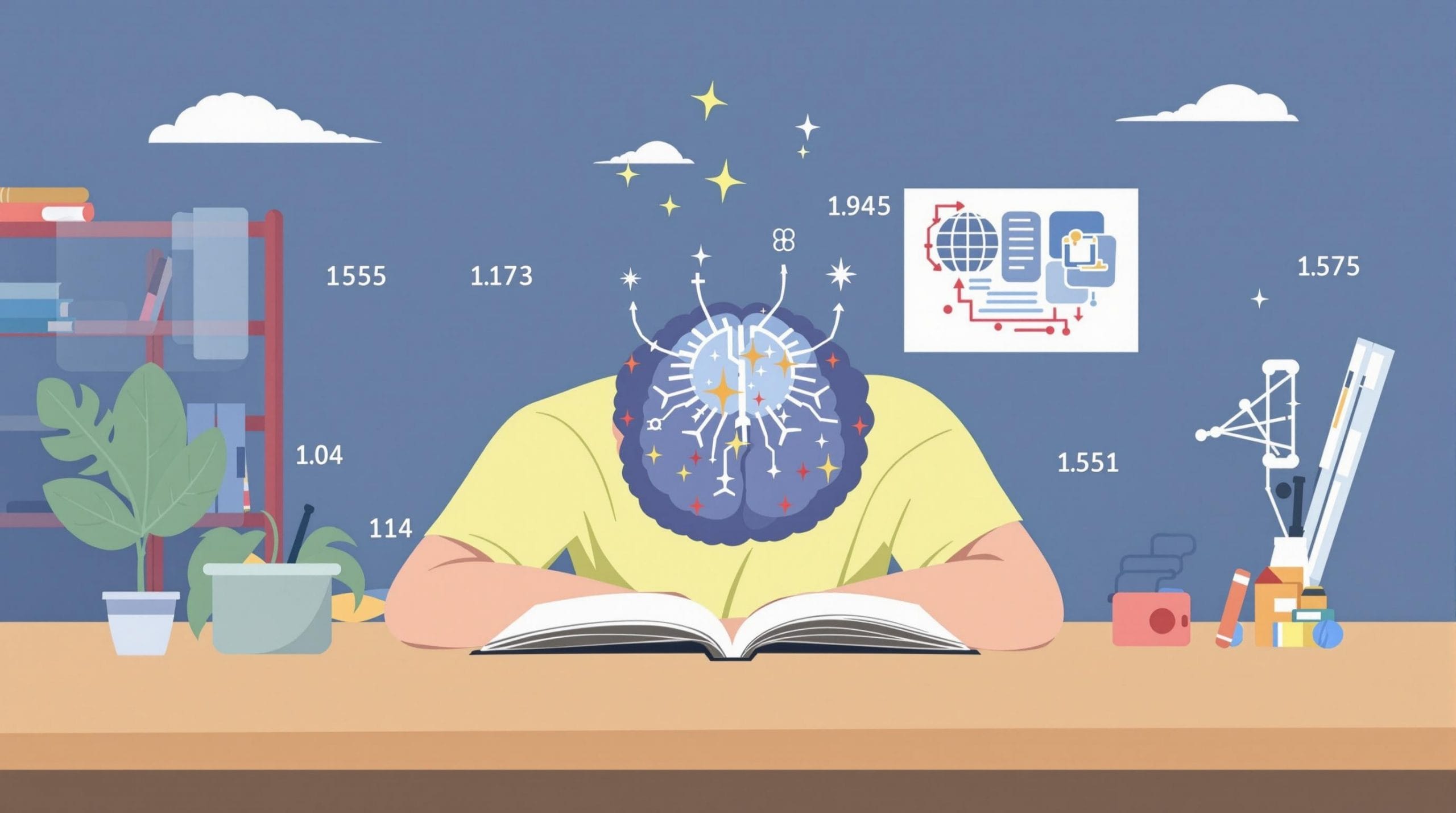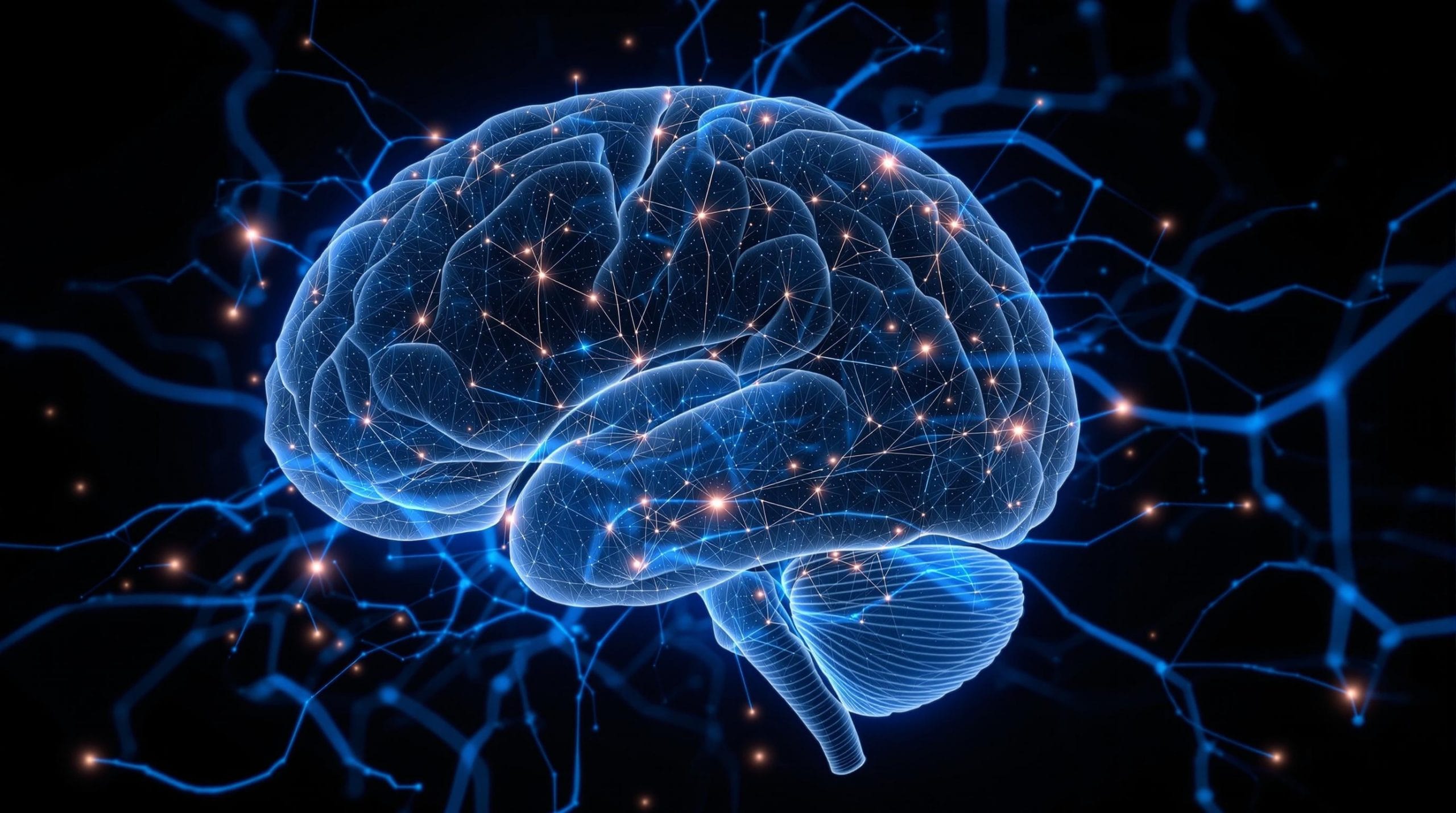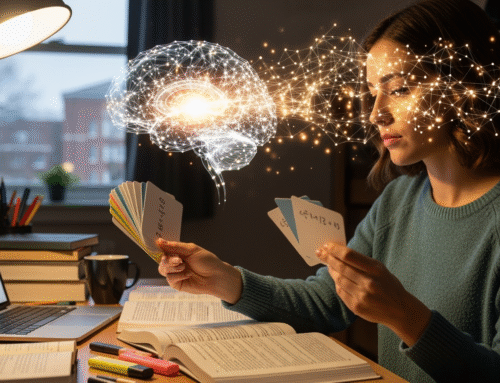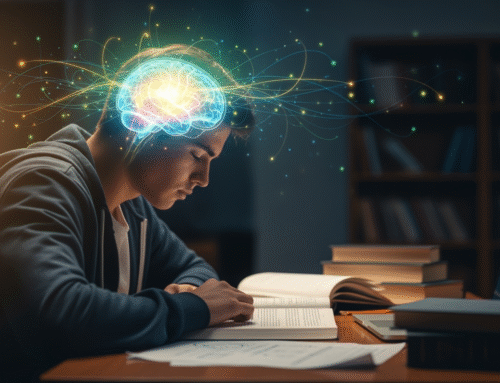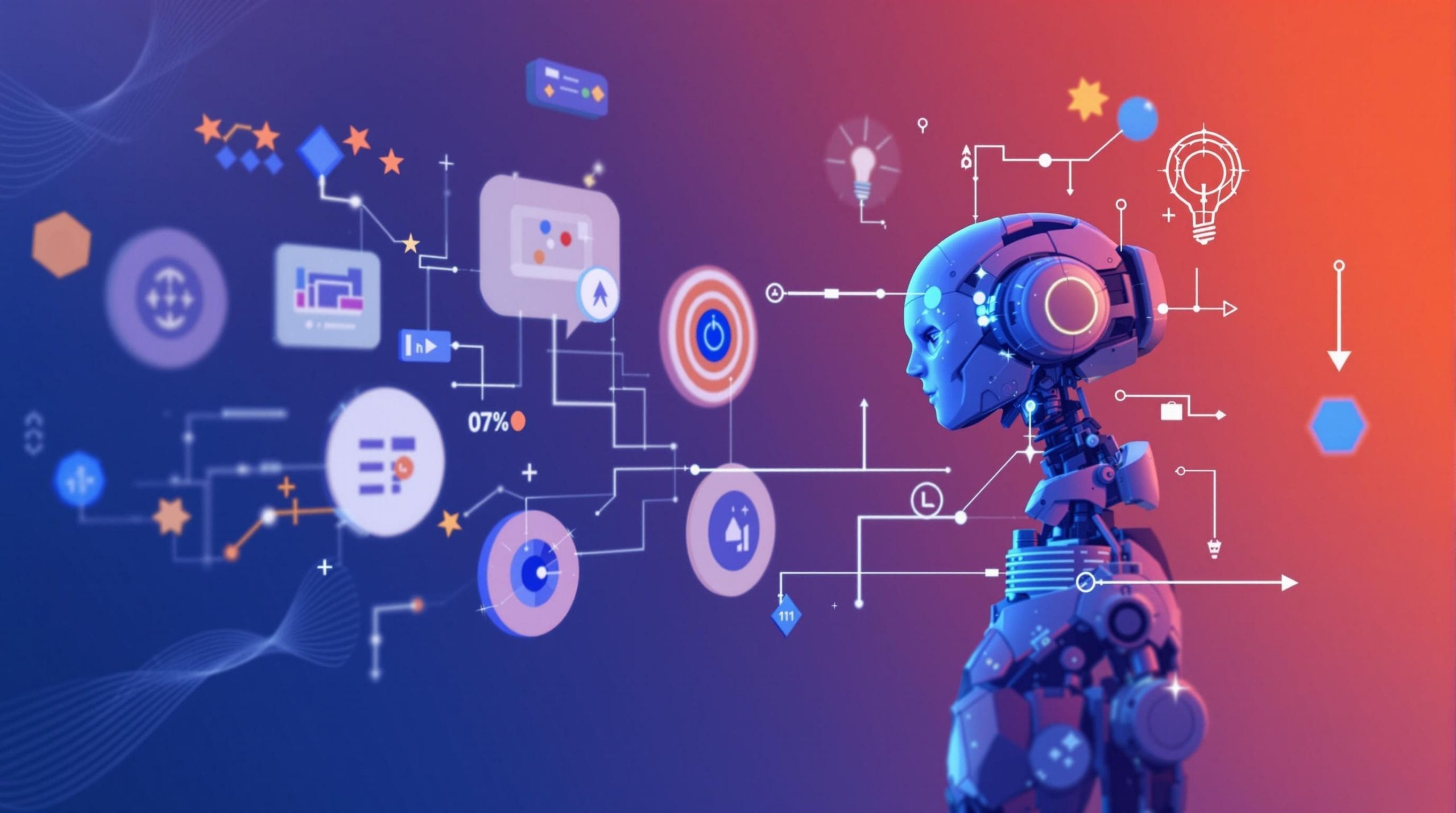The Neuroscience of Doing Nothing: Why a ‘Lazy’ Summer Day is Key to Academic Success
Recent neuroscience research reveals that those seemingly “unproductive” summer moments of staring at clouds or taking aimless walks actually activate critical brain networks essential for learning and memory. Understanding the neuroscience of rest shows us why strategic idleness isn’t laziness—it’s a powerful tool for academic success that supports everything from creative problem-solving to stress reduction.
Key Takeaways
- The brain’s default mode network becomes highly active during rest, supporting memory consolidation and creative insight crucial for academic performance
- Strategic study breaks improve learning efficiency and prevent the cognitive overload that leads to poor retention
- Mind-wandering during idle moments enhances problem-solving abilities and generates innovative solutions to academic challenges
- True mental downtime reduces cortisol levels and prevents student burnout while improving focus and emotional regulation
- Planned “lazy” periods integrated into study schedules boost both creativity and productivity more effectively than continuous focused work
The Brain is Doing a Lot of Something When We Appear to be Doing Nothing
Your brain doesn’t actually rest when you’re doing nothing. According to research from The Psychologist, the brain can be more active at rest than during focused tasks because the default mode network coordinates reflective thought and integration of knowledge. This network becomes highly active during rest and mind-wandering, supporting memory consolidation, creativity, future planning, and problem-solving—all core skills for academic success.
The DMN sits conceptually between task-positive networks that handle focused attention and the brain’s background processing systems. When you’re actively studying, task-positive networks dominate, helping you concentrate on specific material. But when you shift into idle mode, the science of learning shows that the DMN takes over, connecting disparate pieces of information and strengthening neural pathways.
Here’s the key difference: focused task states optimize attention and immediate comprehension, while DMN states enhance consolidation and insight. Mind-wandering differs from meditation too—meditation reduces mind-wandering by focusing attention, while DMN-linked daydreaming supports the associative thinking that leads to breakthrough moments in your studies.
Mental Downtime Transforms Learning and Memory Retention
The importance of breaks for studying becomes clear when you understand how your brain processes information. According to Henry Ford Health, periods of “doing nothing” after learning support consolidation and storage of new information, improving recall and understanding—vital during intensive study periods.
Oscillating between focused work and brief breaks sustains attention and leads to better productivity and decision-making. Resting after lectures or reading combats cognitive overload and allows proper memory consolidation to occur. When you give your brain time to process information offline, you’re literally strengthening the neural connections that help you remember and understand material later.
Try this proven approach: study for 45-50 minutes, then take 10 minutes of true mental idling—staring out the window or taking a gentle walk without your phone. Compare this to nonstop study blocks, and you’ll notice higher recall rates and significantly less mental fatigue. The breaks aren’t stealing time from your studies; they’re making your study time more effective.
Why “Lazy” Moments Spark Creative Breakthroughs and Problem-Solving
Those “aha” moments don’t happen by accident—they occur when your brain has space to make unexpected connections. Research from Freedom shows that unstructured time and daydreaming increase novel idea formation, with many breakthrough insights occurring during idle activities like walking or showering when the DMN integrates disparate information.
Allowing your mind to wander broadens associative networks, leading to innovative solutions and enhanced reasoning. This process, called the incubation effect, works like this: define a tough problem, step away for 5-15 minutes of low-demand activity, then return and record the insights that emerge.
Here’s a practical example: before tackling a challenging essay topic, frame the question in your mind, then take a 15-minute walk without any audio or distractions. Many students report capturing 3-5 new angles or approaches after this simple break. The psychology of learning shows that idleness activates the DMN tied to memory, creativity, and problem-solving, improving both logical thinking and decision-making abilities.
The Biological Payoff: How Doing Less Reduces Stress and Improves Focus
Strategic rest doesn’t just feel good—it creates measurable biological changes that support learning. Short mindful breaks and unstructured idling reduce stress and lower cortisol levels, improving emotional regulation and your readiness to learn effectively. According to Lifeat.io, rest uplifts mood and helps regulate emotions, reducing overwhelm and supporting consistent study habits.
A brief mindful break—just five minutes of diaphragmatic breathing or gazing out a window—can lower cortisol and help regulate emotions while improving productivity. Mindful idleness combats the kind of chronic stress that leads to avoiding student burnout, helping sustain attention and performance across long academic terms.
Try this mini-protocol: between study blocks, spend 5 minutes doing diaphragmatic breathing or sitting quietly outdoors. Rate your stress level from 0-10 before and after the break. Most students see a 2-3 point reduction in perceived stress, along with improved focus when they return to their studies.
True Rest vs Digital Distraction: What Actually Counts as “Doing Nothing”
Not all downtime creates the same benefits. True restorative idling minimizes external inputs, while passive scrolling or multitasking fills cognitive bandwidth and prevents the DMN’s integrative work. When you fill supposed rest time with devices, you’re actually blunting DMN benefits and missing out on the consolidation and creative insights that make breaks valuable.
Understanding how the brain learns helps clarify the difference between meditation and mind-wandering. Meditation reduces mind-wandering by focusing attention on a single point, while DMN-centric idling encourages the free-flowing associations that lead to insights. Both serve important but different cognitive goals.
Here’s what true cognitive rest looks like compared to common distractions:
- High DMN engagement: Unfocused walking, gazing at distant objects, sitting quietly observing clouds
- Moderate restoration: Focused breathing meditation, gentle stretching
- Low restorative value: Phone scrolling, watching videos, multitasking
For effective breaks, choose phone-free activities. If you’re indoors, look at distant objects or nature imagery to reduce visual load and allow your mind to wander productively.
Building Strategic “Laziness” into Your Summer Study Schedule
Planned idling isn’t an accident—it’s a strategic approach that makes summer study more effective by preventing overload while boosting creativity and motivation. According to Ivy Exec, regular breaks improve concentration and productivity while inspiring the kind of positive mood and sense of purpose linked to sustained academic engagement.
A practical cadence that maximizes study break benefits includes 45-50 minutes of focused work followed by 10 minutes of phone-free idling, weekly half-days of completely unstructured time, and periodic long walks without audio for idea incubation. This approach works with your brain’s natural ultradian rhythms rather than against them.
Your weekly plan should include these essential elements:
- Two “blank blocks” of 60-90 minutes for completely free attention
- One half-day devoted to open-ended leisure activities
- Daily micro-idle breaks of 2-3 minutes between study sessions
- One longer incubation walk when working on complex problems
Track your outcomes by measuring pages comprehended per hour, recall rates after 24 hours, the number of ideas generated for essays, and your overall mood and stress ratings. Most students find their efficiency improves dramatically with this approach to time management.
How to Practice Doing Nothing: Simple Techniques Students Can Start Today
Start small with just 3-5 minutes of staring at the sky, breathing naturally, or gazing at distant greenery. As you become more comfortable with mental idleness, gradually scale up to 10-15 minutes. The goal isn’t to achieve any particular state—it’s simply to give your mind permission to wander freely.
Replace one daily “doomscroll” session with a phone-free stroll, and track any perceived clarity or new ideas that emerge. You’ll likely notice that solutions to problems you weren’t even consciously thinking about bubble up during these unstructured moments.
Low-demand activities that permit productive mind-wandering include:
- Washing dishes without audio or podcasts
- Taking showers without music
- Sitting on a bench observing clouds or trees
- Walking without any audio input
- Gazing out windows at distant objects
- Light stretching in a quiet space
Test two different idle practices each day and record which ones reliably produce new ideas or stress relief. If your attention drifts into ruminative worry, gently widen your visual field and soften your focus to encourage associative rather than repetitive thinking.
Use this simple decision tree: Need calm focus? Try 5 minutes of meditation. Need novel ideas? Try 10 minutes of daydreaming walk. Need memory consolidation? Try quiet sitting after your study session.
The Evidence-Backed Benefits Students Can Expect from Strategic Idleness
The research on strategic rest delivers concrete benefits you can measure in your academic work. Quicksilver Scientific reports that students experience improved focus and productivity after breaks, along with better decision-making on academic tasks and enhanced creativity leading to more original solutions in projects and essays.
Memory consolidation improves significantly when you give your brain processing time after lectures or reading sessions. Students who incorporate regular idle periods show better learning efficiency and can maintain high performance across longer study sessions without experiencing the typical decline in
news via inbox
Get our best unfiltered stories and boldest ideas delivered straight to your inbox.
